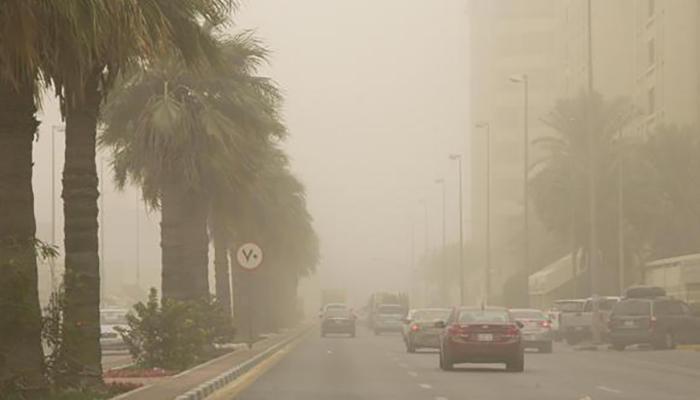
Icy weather, sandstorms hit Kingdom
Icy weather accompanied by sandstorms hit large parts of the Kingdom on Thursday, reducing visibility on the nation’s roads and resulting in major traffic jams.
Motorists should be extra cautious in the dangerous conditions, said Maj. Mohammed Al-Hamadi, spokesman of the Civil Defense Department. He said 34 areas in Riyadh have been affected including Hutat Bani Tamim, Dalam, Hariq, Hilwa, Hayathim and Rima.
Residents complained about the inclement weather. “As I drove to work at noon I could hardly see beyond 50 meters. The tall buildings were hazy in the distance,” said Cenon Sagadal, a marketing representative for a local company.
Conditions worsened as the day wore on. The change in the weather took place early Thursday morning.
The weather forecast Riyadh on Thursday night was 7 degrees Celsius, and on Friday 13 degrees Celsius during the day and 7 degrees Celsius at night.
In the Eastern Province, residents said that the bad weather started on Tuesday with fog and cold weather at night.
“It was foggy two days ago. The fog is gone but sandstorms have taken over, reducing visibility to between 50 and 60 meters,” said Florante Catanus, finance officer at a law firm in Alkhobar.
He added that the weather was very cold at night and would likely get colder because it is still winter.
In Buraidah, Qassim, residents also complained about the sandstorm, saying that visibility was poor starting on Thursday morning.
“It was dark during the day because of the sandstorm. Drivers had to turn their lights on while driving along the city’s main roads,” said Cora A. Flores, a nurse at the Ministry of Health. She said the weather took her by surprise.
Saudi Arabia and other arid countries in the region typically experience sandstorms as temperatures rise or drop with the seasons.
Motorists should be extra cautious in the dangerous conditions, said Maj. Mohammed Al-Hamadi, spokesman of the Civil Defense Department. He said 34 areas in Riyadh have been affected including Hutat Bani Tamim, Dalam, Hariq, Hilwa, Hayathim and Rima.
Residents complained about the inclement weather. “As I drove to work at noon I could hardly see beyond 50 meters. The tall buildings were hazy in the distance,” said Cenon Sagadal, a marketing representative for a local company.
Conditions worsened as the day wore on. The change in the weather took place early Thursday morning.
The weather forecast Riyadh on Thursday night was 7 degrees Celsius, and on Friday 13 degrees Celsius during the day and 7 degrees Celsius at night.
In the Eastern Province, residents said that the bad weather started on Tuesday with fog and cold weather at night.
“It was foggy two days ago. The fog is gone but sandstorms have taken over, reducing visibility to between 50 and 60 meters,” said Florante Catanus, finance officer at a law firm in Alkhobar.
He added that the weather was very cold at night and would likely get colder because it is still winter.
In Buraidah, Qassim, residents also complained about the sandstorm, saying that visibility was poor starting on Thursday morning.
“It was dark during the day because of the sandstorm. Drivers had to turn their lights on while driving along the city’s main roads,” said Cora A. Flores, a nurse at the Ministry of Health. She said the weather took her by surprise.
Saudi Arabia and other arid countries in the region typically experience sandstorms as temperatures rise or drop with the seasons.
Share:
ADD TO EYE OF Riyadh
MOST POPULAR
Riyadh Gears Up for the 2024 Islamic Development Bank Group’s Annual Meetings and IsDB Golden Jubilee Celebration
Wednesday 17 April, 2024 10:12Emirates NBD and partners announce second cohort of ‘National Digital Talent Incubator’ program
Wednesday 17 April, 2024 1:04UAE, Costa Rica committed to developing resilient and sustainable economies based on innovation: Al Zeyoudi
Thursday 18 April, 2024 10:10New airlines connecting Kingdom with Africa to be launched soon: Report
Wednesday 17 April, 2024 9:50 ×


























